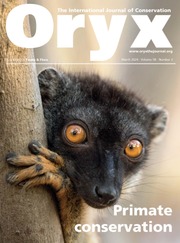In October 2024, Mongolia's Ministry of Environment and Climate Change officially designated 25 October as Khulan Conservation Day. The designation, signed by the Minister of Environment and Climate Change, recognizes the Asiatic wild ass Equus hemionus (known locally as khulan) as a vital component of Mongolia's natural heritage, and marks the beginning of an annual commitment to its conservation.
It follows over a decade of research and conservation by the Wildlife Conservation Society Mongolia Program, which initially proposed and led the initiative. Over 100 stakeholders convened in Ulaanbaatar for a high-level meeting to celebrate the khulan and discuss future conservation strategies. Meanwhile, awareness events in the South Gobi engaged > 400 children across two provinces that form a core part of the species’ range. The initiative received strong international support from key partners, including the United Nations in Mongolia, the IUCN Species Survival Commission Equid Specialist Group and the Convention on Migratory Species Central Asian Mammals Initiative.
Khulan are highly mobile ungulates whose movements exceed those of many well-known migratory terrestrial mammals (Tucker et al., 2018, Science, 359, 466–469). Their ability to traverse vast distances across Central Asia's harsh, resource-poor drylands is critical for their survival. Nearly 80% of the global khulan population resides in Mongolia's Gobi Desert, making its conservation status heavily dependent on local conditions (Buuveibaatar et al., 2017, Oryx, 51, 639–647). However, the species faces multiple pressures and is categorized as Near Threatened on the IUCN Red List. Habitat loss and fragmentation driven by infrastructure development, particularly roads and fenced railways, limit its access to essential resources. The planned construction of > 1,000 km of new railways in the central Gobi region is a pressing concern. If these railways are fenced, with limited wildlife crossings, khulan movements could be further restricted. Additional challenges include illegal hunting, habitat degradation from livestock overgrazing, and increasing extreme weather events such as prolonged droughts and severe winters linked to climate change.
Mongolia has been a committed Party to the Convention on Migratory Species since 1999, and the khulan was added to its list of protected species in 2002. The establishment of Khulan Conservation Day aims to raise awareness and foster collaboration to protect this keystone species and its ecosystem. As an umbrella species, conserving the khulan benefits not only its own population but also other threatened wildlife, ecological processes and local communities. Although Khulan Conservation Day is currently exclusive to Mongolia, there is hope that the other khulan range states will join, using the day as a platform to share achievements and strengthen conservation across the species' range.


